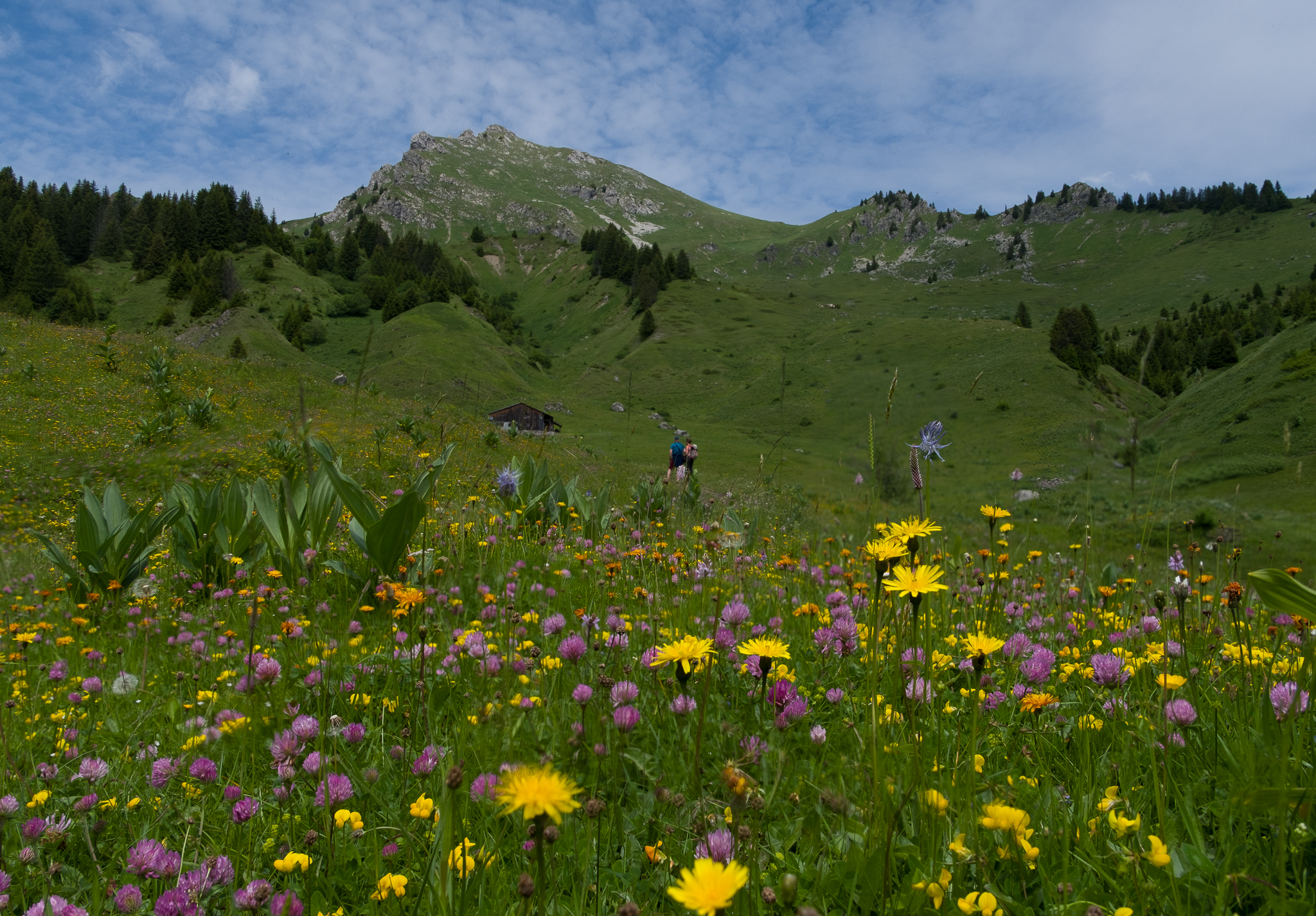The blooming valley de La Crotte: Les Munes

Taninges
The blooming valley de La Crotte: Les Munes
Easy
2h
8,9km
+514m
-514m
Embed this item to access it offline
A mountainside hike: a veritable paradise for wildlife aficionados and macroflora connoisseurs… If you're patient, you might spot some mouflons on the Pointe d'Uble.
Attachment
- Downloadpdf
le-vallon-fleuri-de-la-crotte-les-munes-1
Credit: Points d'intérêts du parcours - Asters-CEN74
4 points of interest

@FotoFlo.net  Fauna
FaunaA skilful pest: the bark beetle
Bark beetles are a large family of insects known as Coleoptera, which can grow to between 4 and 6 mm in length. Naturally present throughout Europe, they are one of the most important pests of softwood forests, and more specifically of the spruce forest. Bark beetles are specific to a particular wood type. The spruce type is known as the typographer and the chalcographer, and the Scots pine as the stenographer. The bark beetle burrows under the bark, blocking the flow of sap and causing the softwood to dry out. In the Grand Est and Bourgogne-Franche-Comté regions, around 10 million m3 of wood were infected between September 2018 and the end of 2020, according to the ONF (National Forest Office). Climate change and periods of drought are weakening trees' defences and encouraging the pests to spread.
@asters  Fauna
FaunaThe mouflon, spiral-hoofed sheep
The ancestor of the domestic sheep, the mouflon is a wild sheep with a stocky body and thick feet, found in a large number of European countries. The mouflon has a coarse skin, reddish-brown in summer and blackish-brown in winter. The male has two thick horns that spiral backwards (up to 85 cm long). In females, they are short (15 cm) and curved backwards or absent altogether. The Mediterranean mouflon was introduced to our region as part of a wider policy to save the Corsican mouflon and replenish the native big game species, which had all but disappeared by the 1950s.
@FotoFlo.net  Flora
FloraThe golden ball: Globeflower
The globeflower is a mountain species, found at altitudes of between 500 and 2,500 metres. It thrives in damp meadows. A familiar sight in the Northern Alps, it is often called buttercup and it blossoms from May to August. The flowers are often single and have between 6 and 15 bright yellow petal-like sepals, which together form a ball measuring 3 to 5 cm in diameter. These flowers never fully open and they retain their simple, round shape. These enclosed flowers are pollinated by a small fly which lays eggs on the ovaries and whose larvae feed on some of the seeds. So, are you ready to impress your friends and family with your knowledge on this beautiful flower?
@FotoFlo.net  Flora
FloraOrchids gone wild!
The mention of the word "orchids" often sparks a great deal of curiosity, as our French imagination conjures up images of cultivated tropical flowers. However, orchids are found almost everywhere in the world, and constitute the largest family in the plant kingdom, with over 30,000 species. There are 160 species of wild orchid in France. Orchids have adapted to all kinds of environments: Scrubland and maquis: orphys, serapias. Dry grasslands: orphys, orchis. Flood-meadows and marshes: Anacamptis palustris. Forests: helleborine, cephalanthera. Alpine pastures: gymnadenia, globe orchid, pseudorchis albida.
Description
From the Praz de Lys tourist office parking above Taninges, take the forest path on the left, in front of the CR (hiking trail) known as Les Lousses, which leads down to La Crotte. When you get to the Chalet de la Crotte, turn right up to the Chalets de Rosset. At the foot of the green Pointe d'Uble, take the left-hand path leading to Les Munes. Follow the path just below the Vers le Folliet chalet (following the blue marks). The path meets the torrent and passes close to the Cascade des Munes. A few hundred meters further up, you reach the Munes mountain pasture with its traditional chalets. Return by the same way. A loop is also available, keeping to the right of the vehicular road. You can also head back to the Col de la Ramaz and take the summer shuttle bus.
- Departure : Tourist Office parking area, Praz de Lys
- Arrival : Office de Tourisme (tourist office) parking area, Praz de Lys
- Towns crossed : Taninges and Mieussy
Altimetric profile
Recommandations
Always be careful and plan ahead when hiking. Asters, CEN 74 can not be held responsible for the occurrence of any accident or incident on this trail.
Transport
Access and parking
Parking de la Crotte Praz de Lys 74440 Taninges. From the road "CR dit de vers la Crotte", 74440 Taninges, turn right in a hairpin turn going up towards Praz de Lys, onto the D 328.
Parking :
Office de tourisme (Tourist office) Praz de Lys 74440 Taninges
Report a problem or an error
If you have found an error on this page or if you have noticed any problems during your hike, please report them to us here:
